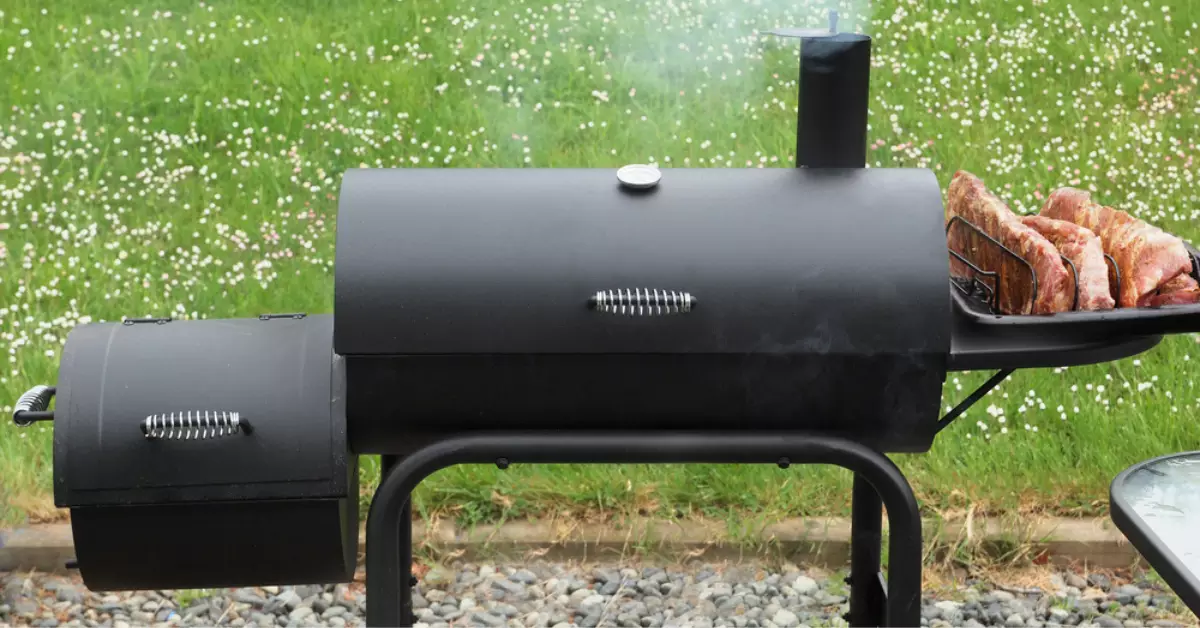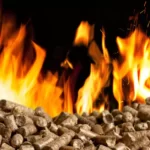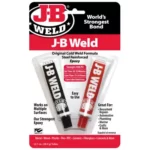As backyard barbecues and home-smoked meals continue to grow in popularity, the type of smoker used can make a significant difference in the outcome. One debate that often surfaces in the smoking community centers on whether a smoker should be airtight.
An airtight smoker is a cooking apparatus that allows minimal to no airflow. It is designed to keep the smoke and heat contained within the unit to maintain consistent temperatures.
This feature might seem counterintuitive, especially considering that oxygen is an essential component in maintaining fire. But the presence or absence of this attribute in smokers can change the flavor and texture of your smoked meals, making this an important topic for any BBQ lover.
Air Control in Smoking Process
Role of Air in Smoking Meat
Air plays an instrumental role in the smoking process. At its core, the combustion of wood or charcoal in a smoker requires oxygen. This combustion process produces the heat and smoke that give smoked food its distinctive flavor.
Ventilation Mechanisms in Smokers
Most smokers come equipped with vents or dampers that allow you to regulate airflow. By adjusting these components, you can control the smoker’s temperature, intensity of smoke, and even the combustion rate.
Do Smokers Need to be Airtight?
Navigating through the world of smoking can be challenging, especially when it comes to deciding whether your smoker needs to be airtight or not. The answer, however, isn’t a simple yes or no. It’s a delicate balance influenced by a variety of factors, such as the type of food being smoked, the specific smoker used, and personal preference for smoke intensity and flavor.
Interplay Between Smoke and Air
The relationship between smoke and air within a smoker is an intricate dance that can greatly influence the end result of your barbecue. In an airtight smoker, the environment is teeming with smoke, which infuses the food with a strong and intense smoky flavor. On the other hand, a smoker that allows more air will lead to a lighter smoke flavor. Thus, the degree of air tightness you need will depend on how smoky you like your food.
Consequences of an Airtight Smoker
While an airtight smoker might seem ideal for maximum smoke infusion, it’s crucial to note that it can sometimes lead to a phenomenon called “stale smoke.” This happens when smoke is unable to escape and instead lingers, causing your food to take on a bitter, less appealing taste. Therefore, even in an airtight smoker, some level of ventilation is necessary to allow the smoke to refresh.
Ideal Conditions for Smoke Penetration
The secret to getting that perfect, smoky flavor lies in balancing smoke production and air circulation. A consistent, thin stream of smoke provides optimal conditions for smoke penetration, infusing your food with a delightful smoky flavor without overwhelming it. To achieve this, you need to ensure there’s just the right amount of air to keep the fire in your smoker going at the desired rate.
Airtight vs. Non-Airtight Smokers: Pros and Cons
To better understand whether you need an airtight smoker, let’s weigh the pros and cons of airtight and non-airtight smokers.
Benefits of Airtight Smokers
Airtight smokers come with a host of benefits, such as:
- Superior Temperature Control: Since there’s little to no air leakage, heat is retained better, making it easier to maintain a consistent temperature.
- Fuel Efficiency: With better heat retention, less fuel is needed to keep the fire going, making airtight smokers more fuel-efficient.
- Stronger Smoke Flavor: Because they limit air circulation, airtight smokers often result in a more potent smoke flavor.
Drawbacks of Airtight Smokers
However, they do come with some disadvantages, including:
- Risk of Stale Smoke: Without proper management, airtight smokers can trap smoke, causing it to become stale and negatively affect the flavor of your food.
- Potentially Steeper Learning Curve: Learning how to adjust vents to maintain the perfect balance of heat and smoke might take some practice.
Advantages of Non-Airtight Smokers
On the other hand, non-airtight smokers also offer some benefits:
- Reduced Risk of Stale Smoke: The natural air circulation in non-airtight smokers helps to refresh the smoke, reducing the chance of it becoming stale.
- Easier to Use: Without the need for meticulous air control, non-airtight smokers are typically easier for beginners to use.
Limitations of Non-Airtight Smokers
Nonetheless, there are some limitations to consider:
- Less Temperature Control: Non-airtight smokers might struggle to maintain consistent temperatures due to the increased airflow.
- Less Fuel-Efficient: More heat escapes from non-airtight smokers, potentially requiring more fuel to maintain the desired temperature.
Importance of Airflow in Smokers
When it comes to smoking food, managing airflow is key. Air, particularly oxygen, plays a crucial role in the smoking process.
Concept of Oxygen and Combustion in Smokers
Combustion, or the burning of your fuel source, is a chemical reaction that requires oxygen. Without enough oxygen, your smoker will struggle to maintain the necessary heat for cooking. But with too much oxygen, the fire may burn too hot, potentially overcooking or burning your food. Hence, controlling the level of oxygen in your smoker is vital for successful smoking.
Impact of Airflow on Flavor and Cook Time
Good airflow within the smoker doesn’t just aid combustion; it also has a direct impact on the flavor of your food and the cooking time. An airtight environment with less airflow results in a stronger smoke flavor but might increase cooking times due to lower temperatures. On the other hand, increased airflow can lead to higher temperatures, which could reduce cooking time but may also result in a lighter smoke flavor.
Regulating Airflow with Vents and Dampers
Regulating airflow in smokers is typically achieved through the use of vents and dampers. By adjusting these, you can control the amount of air that enters and leaves your smoker, giving you the ability to manage the heat and smoke levels.
- Inlet Vents: Also known as intake vents, these are typically located at the bottom of the smoker. They allow fresh air (oxygen) into the smoker, which is crucial for combustion.
- Exhaust Vents: These vents, often found at the top, let smoke and hot air escape. Adjusting these vents can help prevent the buildup of stale smoke.
Tips for Managing Airflow in Smokers
Successfully managing airflow in your smoker might require some practice. However, here are some tips to set you on the right path:
- Start with Open Vents: When you’re just starting your fire, keep the vents fully open to allow maximum airflow.
- Make Gradual Adjustments: Once your smoker is up to temperature, start adjusting the vents gradually. Drastic changes can lead to temperature spikes or drops.
- Monitor the Smoke: The color and consistency of your smoke can give you clues about your airflow. Thin, blue smoke indicates good airflow, while thick, white smoke can signify inadequate airflow.
Frequently Asked Questions
Can I use a smoker that isn’t completely airtight?
Yes, you can use a smoker that isn’t completely airtight. However, you may need to monitor the temperature more closely as it may fluctuate due to the increased airflow.
How can I make my smoker more airtight?
Making your smoker more airtight can be achieved by sealing any gaps or leaks with food-grade silicone or high-temperature gasket material. Some smokers may also have optional seal kits available.
Do electric smokers need to be airtight?
Like other smokers, electric smokers don’t need to be completely airtight. They typically have vents or dampers for smoke and heat control. However, they may be more airtight than other types of smokers due to their design.
Conclusion
The question of whether a smoker needs to be airtight hinges on a variety of factors, from the desired smoke flavor to the type of smoker used. While an airtight smoker offers benefits like better temperature control and stronger smoke flavor, it also presents challenges like the risk of stale smoke.
At the same time, non-airtight smokers, while potentially less fuel-efficient and less capable of maintaining steady temperatures, can reduce the risk of stale smoke and might be easier for beginners to use.
Ultimately, understanding and controlling airflow in your smoker is key, whether it’s airtight or not. By mastering the balance of oxygen, heat, and smoke, you can achieve the perfect smoky flavor every time. With practice and experience, you’ll be able to determine the right level of airtightness for your specific needs, delivering delicious, smoke-infused dishes to your table.







